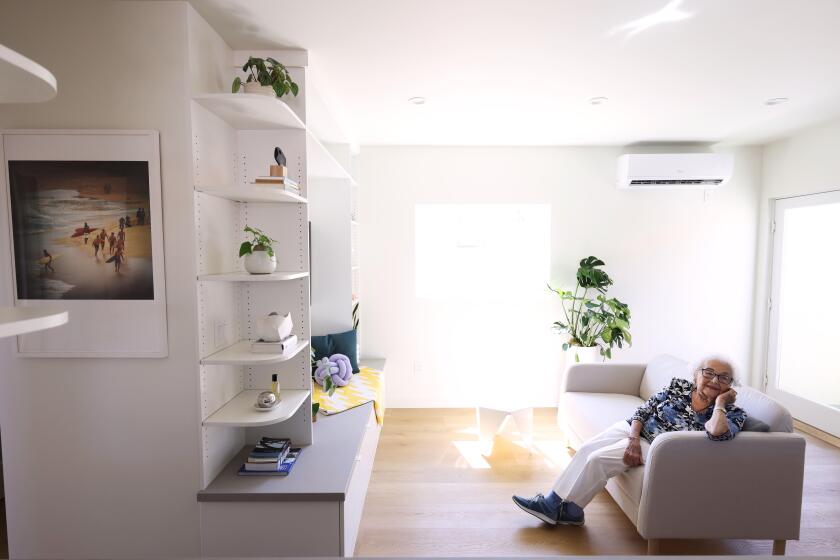Lawry’s Center to Be Transformed
Emerging from years of neglect and the threat of demolition, a northeast Los Angeles landmark--the former Lawry’s California Center--will be reborn as a hub of environmental and educational activities, officials announced Thursday.
The $8-million project will transform the complex’s distinctive hacienda-style buildings and lush gardens into the Los Angeles River Center, a focal point of efforts to develop greenbelts, parks and other public facilities along the riverbed’s industrialized corridor.
“These gardens have been abandoned . . . but they have not been forgotten by us,” county Supervisor Gloria Molina said amid the overgrown greenery of the center’s main courtyard.
As envisioned, the gardens will be restored and the buildings will be refurbished for exhibit areas, spaces for community groups and the Santa Monica Mountains Conservancy, a computer animation school and possibly a culinary arts institute.
There is hope that a small restaurant may be incorporated into the chefs’ school, and plans include trails to a new park at the convergence of the Arroyo Seco and the Los Angeles River.
“This is only the beginning,” said state Sen. Richard G. Polanco (D-Los Angeles), who played a key role in marshaling resources to save the center, a once thriving gathering spot that included a popular Lawry’s restaurant.
An unusual package of city, county and state aid was cobbled together by Polanco, Molina and City Councilman Mike Hernandez, officials who represent common neighborhoods but often are at odds politically.
Hernandez and the city planners were initially backing a redevelopment proposal that would have razed the Lawry’s complex for a Home Depot. Complaints from residents and environmentalists brought the intervention of Polanco and later Molina, who developed a plan to preserve the center. With the promised infusion of state and county funds, Hernandez endorsed the River Center proposal.
With more than $2 million each in grants, loans and bond money from state, county and city governments, the Santa Monica Mountains Conservancy will take over the center. The Malibu-based state agency, trying to reach out to a wider cross-section of Los Angeles, is taking on a program to enhance public access along the massive river channel snaking through the heart of the city.
The Home Depot store, expected to create about 200 jobs filled largely by northeast Los Angeles residents, has been shifted to a parking area at the rear of the Lawry’s parcel.
“We found a way to have it all,” Polanco said. “This is a win-win project.” Hernandez, who grew up in the area and lives a few blocks from the site, recalled the large Lawry’s spice plant that once occupied the property, along with corporate offices. There was neighborhood excitement when tennis courts were added, but then disappointment as fences went up around them. “They weren’t for the community,” but for employees only, he said.
The spice plant, with 350 jobs, was forced to relocate because of air quality regulations, he said. The Lawry’s restaurant succumbed several years later to financial losses and a corporate merger. In recent years, occasional movie crews and a multi-agency law enforcement task force have had the run of the center’s tree-covered pathways.
In about six months, however, the doors should reopen, with a special welcome for young people and residents of surrounding neighborhoods, officials said.
“No longer will the kids be on the outside looking in,” Hernandez said.
More to Read
Sign up for Essential California
The most important California stories and recommendations in your inbox every morning.
You may occasionally receive promotional content from the Los Angeles Times.










